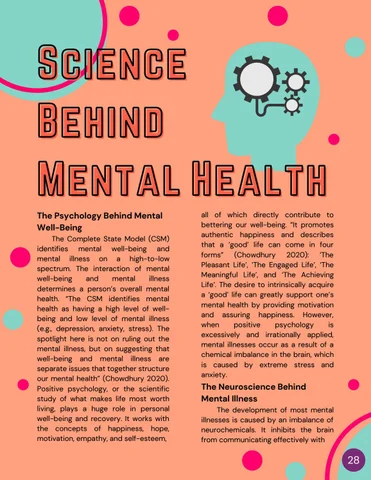The Psychology Behind Mental Well-Being The Complete State Model (CSM) identifies mental well-being and mental illness on a high-to-low spectrum. The interaction of mental well-being and mental illness determines a person’s overall mental health. “The CSM identifies mental health as having a high level of wellbeing and low level of mental illness (e.g., depression, anxiety, stress). The spotlight here is not on ruling out the mental illness, but on suggesting that well-being and mental illness are separate issues that together structure our mental health” (Chowdhury 2020). Positive psychology, or the scientific study of what makes life most worth living, plays a huge role in personal well-being and recovery. It works with the concepts of happiness, hope, motivation, empathy, and self-esteem,
all of which directly contribute to bettering our well-being. “It promotes authentic happiness and describes that a ‘good’ life can come in four forms” (Chowdhury 2020): ‘The Pleasant Life’, ‘The Engaged Life’, ‘The Meaningful Life’, and ‘The Achieving Life’. The desire to intrinsically acquire a ‘good’ life can greatly support one’s mental health by providing motivation and assuring happiness. However, when positive psychology is excessively and irrationally applied, mental illnesses occur as a result of a chemical imbalance in the brain, which is caused by extreme stress and anxiety.
The Neuroscience Behind Mental Illness The development of most mental illnesses is caused by an imbalance of neurochemicals. It inhibits the brain from communicating effectively with
28














